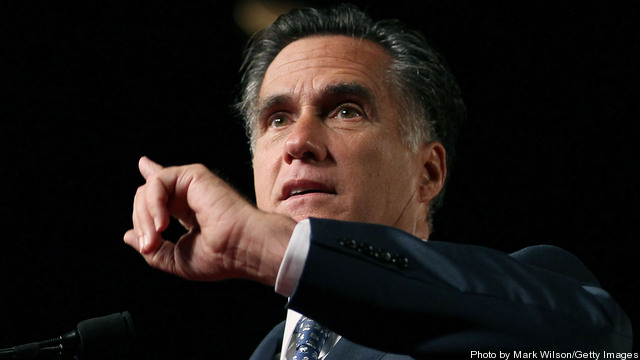Romney Pledges Defense Boost; Analyst Predicts $1 Trillion in DoD Cuts
Posted on
 Washington: It’s a nice round number. One trillion. That is how much one veteran defense budget expert believes the military will have to cut over the next 10 years.
Washington: It’s a nice round number. One trillion. That is how much one veteran defense budget expert believes the military will have to cut over the next 10 years.
But perennial GOP presidential candidate Mitt Romney is having none of this sort of defeatist talk. Romney, clearly using data much of America isn’t privy to, pledged to increase defense spending should he win the GOP nomination and be elected president.
Romney said he would “reverse President Obama’s massive defense cuts” as soon he’s elected. “Time and again, we have seen that attempts to balance the budget by weakening our military only lead to a far higher price, not only in treasure but in blood.”
Clearly reflecting an emerging GOP theme, Romney targeted the Navy for especially robust increases: “I will reverse the hollowing of our Navy and announce an initiative to increase the shipbuilding rate from 9 per year to 15.” For the traditional red meat GOP crowd, Romney pledged to “begin reversing Obama-era cuts to national missile defense and prioritize the full deployment of a multilayered national ballistic missile defense system.”
Meanwhile, inside the Beltway, defense experts spoke solemnly this morning of defense cuts of between $550 billion and $1 trillion. The Center for a New American Security (CNAS) unveiled a new report warning that cuts of more than $550 billion could do serious harm to America’s ability deter and manage events around the globe.
The most striking comments came from the only person to have actually managed a defense drawdown, Gordon Adams, former defense guy at the Office of Management and Budget under President Clinton and now a professor at American University.
“I predict we will go down about $1 trillion,” Adams told an audience of several hundred of Washington’s defense aficionados at the Newseum.
Adams has argued forcefully for months that cuts of that level — roughly twice what the Obama administration is already advocating — will not harm American security and are in line with past drawdowns after the fall of the Berlin Wall and the ends of the Vietnam and Korean wars.
His colleagues at CNAS were not quite as comfortable with cuts of that magnitude. The report’s co-authors say that America’s pursuit of global engagement would be “placed at high risk if total national defense cuts exceed $500-$550 billion over 10 years.”
One of the problems with America’s current spending position, Gordon said, is that the White House leadership is “missing” from the budget discussion. The one truly important budget decision is how much money overall –the top line — the Defense Department will get. The White House makes that decision and Adams said the current position “is not realistic.”
Among the ways the country could make responsible cuts that do not imperil current strategic goals, the report says, would be to reduce our presence in Europe. Europe’s continuing reluctance to spend on military capabilities means our NATO allies are less capable than they should be. In the words of CNAS panelist and report co-author Nora Bensahel, the Europeans “military utility” to the United States has gone down.
Instead of Europe, the US should focus is troops and equipment on the MidEast and the western Pacific, the report recommends.
In terms of weapons and force structure generally, Bensahel said the U.S. should increase research and development funding on sea and air drones because they “could profoundly affect” the US military in the future.
The report’s co-authors pointed to the difficulties of breaking what defense analysts call the budgetary golden triangle. Each service generally gets 30 percent of the budget, with 10 percent allocated to defense-wide spending for such things as the Office of Secretary of Defense and defense agencies. The services battle hard to prevent those balances from changing. But CNAS’ Travis Sharp argued the Air Force and Navy should get the most of whatever shift might occur to cope with the new focus on the Mideast and Pacific.
However, the land forces — Army and Marines — have a strong moral claim to resources, having sacrificed so many brothers in arms over the last decade, Sharp said. That will complicate any effort to shift the budgetary percentages.
One of the ways to contain future costs, would be to fold much of the heavy Army forces — armor and artillery — into the National Guard and the Reserves, several CNAS panelists said today.
That is a role reversal from the last drawdown, when the active Army and the National Guard fought like banshees over who would “lose” the most. Active Army representatives at the time argued that Guard and Reserve forces were just not up the job of actually fighting. The last decade has erased that perception and left America with an enormous cadre of highly experienced Guard and reservists.
But military officials I spoke with expressed concern about such a wholesale shift, noting that state governors, who control Guard units, would have little interest in hosting heavily armored units since they could provide little capability to the states, who are most interested in trucks and radios to cope with disasters and civil disturbances.
Subscribe to our newsletter
Promotions, new products and sales. Directly to your inbox.
